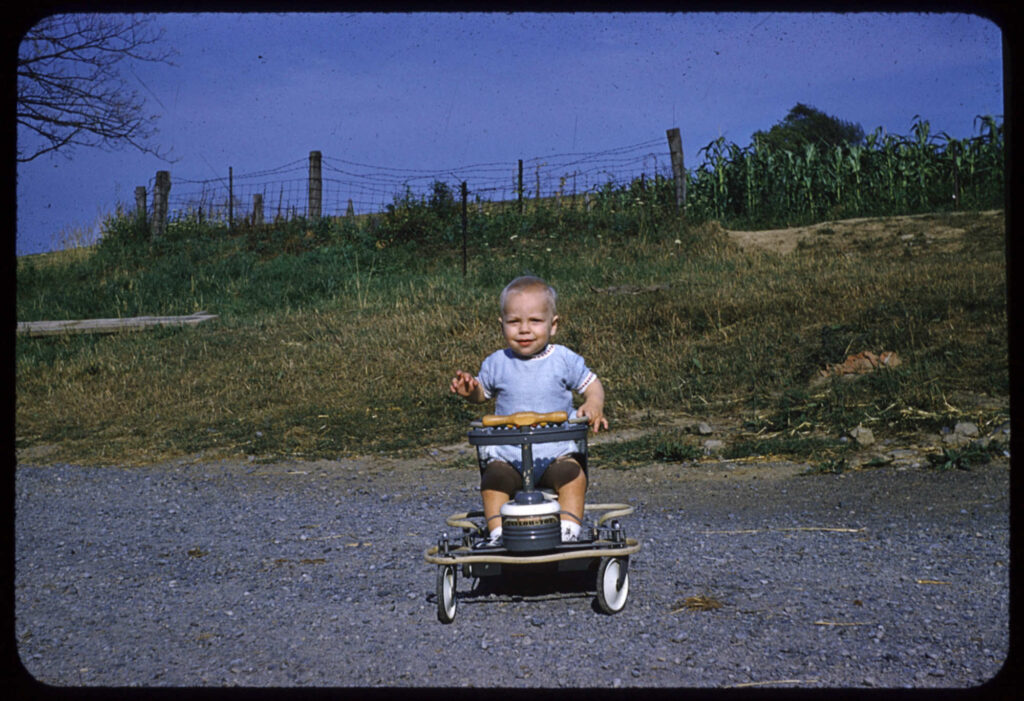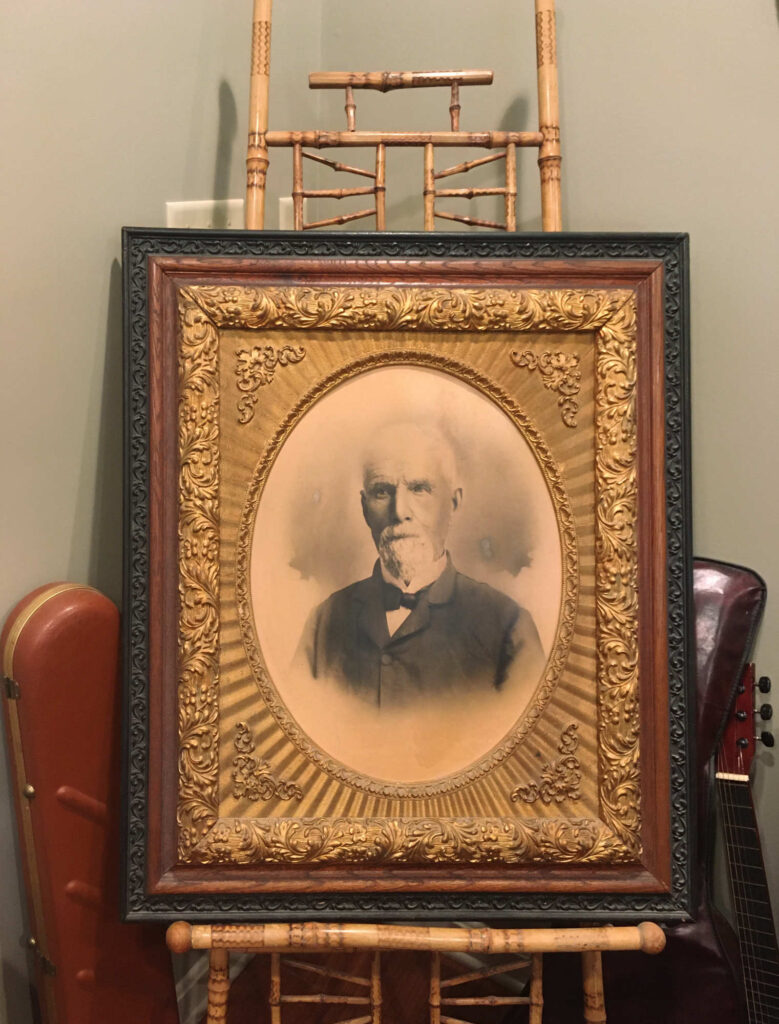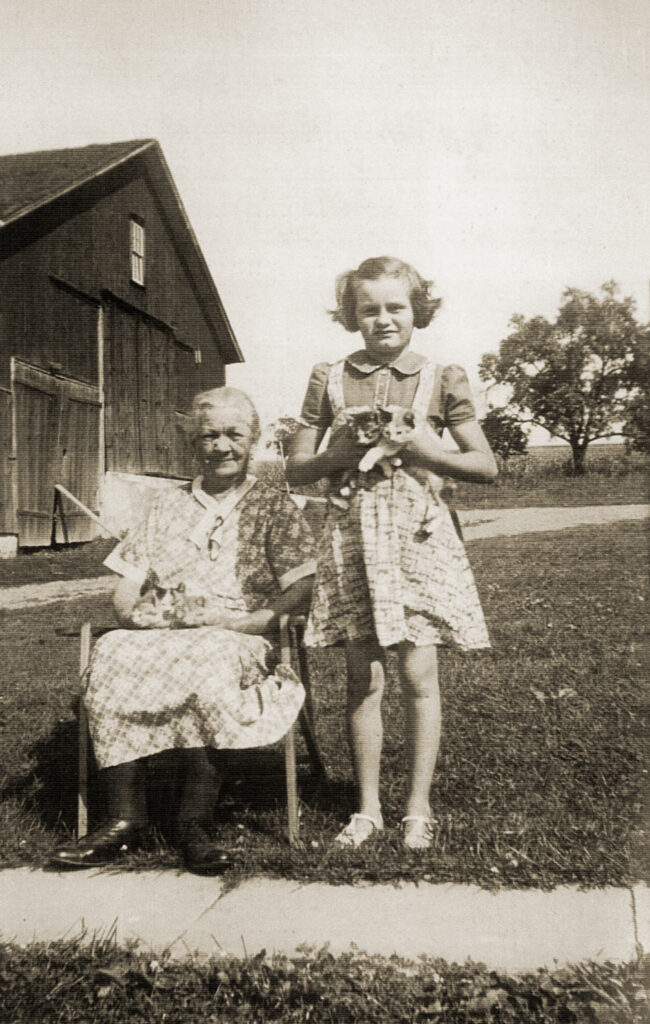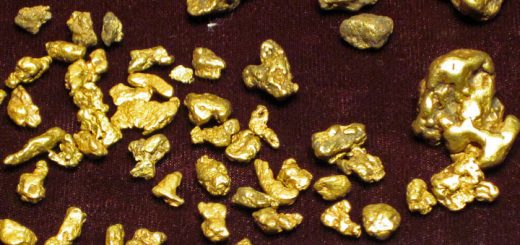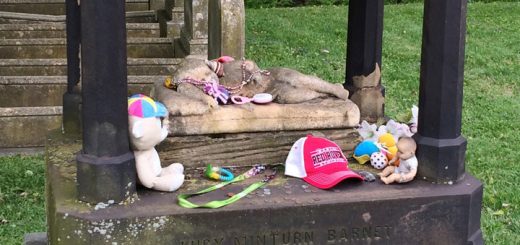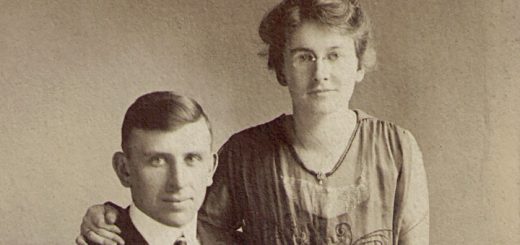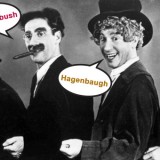Stories Left Untold
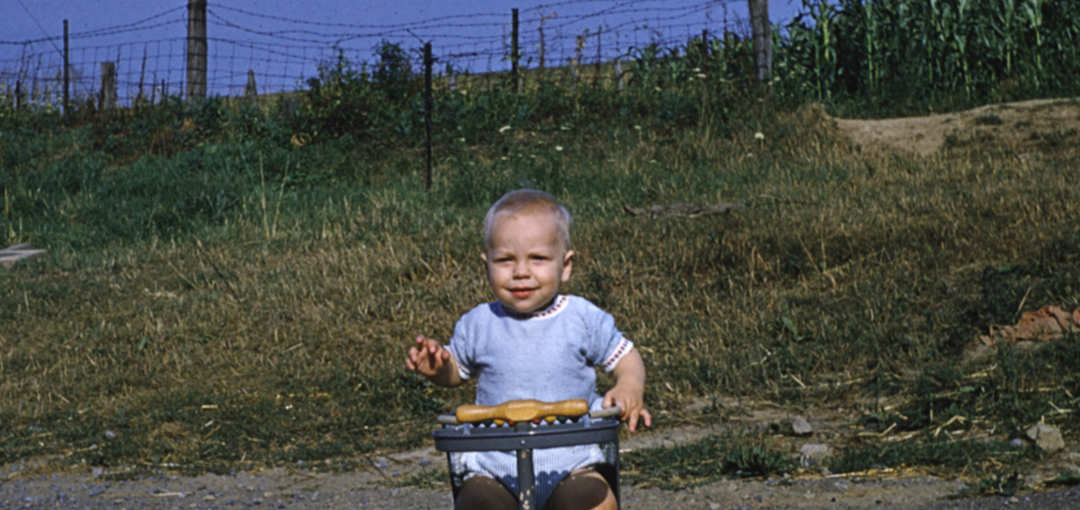
In 2014, my father, Mark, and I founded this site to share the stories and genealogy of our Hagenbuch family. It’s been almost five months since Dad died, and you may have noticed that articles continue to appear each week. Dad wanted it that way! Some of these are updated versions of older stories, while others are newly researched pieces.
This past week, I performed a bit of housekeeping on Hagenbuch.org and found six drafts for articles that my father began and never completed. All of them are either lists of bullet points, a single phrase, or a few paragraphs in length. Most were incorporated into future posts. But a small number mention stories that Dad never explained and may remain untold due to his passing.
The following six drafts are presented as they were found, with only some minor adjustments for formatting. Additional photographs and commentary are provided for context:
My Days as a Farm Boy
Drafted: July 9, 2015
– sandbox
– grabbing the electric fence
– horse chestnut bolos
– driving the tractor into the tree
– driving the tractor to the baler, Dad’s hand motions
– selling 1,000 ears of corn
– filling silo
– hooking the cow chains
– the skunks
– the raccoon
This draft makes me smile and reads almost like a poem. Dad used some of these ideas in later articles, telling a story about selling 1,000 ears of corn and discussing his memories of the sandbox. Others, however, were never explained such as the horse chestnut bolos or the skunks. Perhaps one of his siblings or close relatives remembers?
Keeping Community Within the Family
Drafted: January 4, 2016
– Keefers and Hagenbuchs
– Sechlers and Hagenbuchs
– Ray K.’s double Hagenbuch family
– early Hagenbuchs intermarried
– Uncle Joe and the two sisters
Here, again, it’s possible to see the beginning of what would become future articles. Dad was thinking about how families and friends were connected by community, church, and marriage. This article, written in 2019, touched upon Ray K. Hagenbuch (b. 1906) and his two Hagenbuch family lines. Dad wouldn’t get to examining the connections between the Sechlers and Hagenbuchs until this piece was published in 2022.
Pappy, Pop, Nana, and Grandma
Drafted: May 26, 2016
What do you call your grandparents…
There isn’t much to this draft, just an initial idea. Looking at the date it was created, I know exactly why Dad was thinking about this. He became a grandfather for the first time in early May of 2016. He must have been weighing options for what he would be called by his grandchildren. (He eventually settled upon “Gramps.”) A few weeks after starting this piece, he published a different post about what influences the naming of children.
Short Stories
Drafted: November 5, 2017
– Charles Stedman
– Pap Pap calling me Dutch
– Hinkel Dreck and Hinkel Fuuss
– If I had only asked what great grandfather Hiram was like… and did he know Peter Hagenbuch
– On the 1890 census, a hired girl for Hiram
– Finding the Hagenbuch Homestead
For this piece, Dad had compiled a potpourri of stories that he wanted to share. He would later go on to write about some of them in other articles, such as this one detailing Charles Stedman who was captain of the Charming Nancy and another discussing Peter Hagenbuch (b. 1818).
One topic that he ever explored was “On the 1890 census, a hired girl for Hiram.” Genealogists will immediately noticed an error in what Dad wrote. Most of the 1890 census was destroyed in a fire, suggesting that Dad typed the wrong date. I believe what he actually meant was the 1880 census which shows a servant living with the family of Hiram Hagenbuch (b. 1847). The servant’s name was Alvaretta Mills, and she was recorded as 21 years old.
I couldn’t help but dig into the life of this person a bit further. Research shows that Alvaretta Jennie Mills was born on January 8, 1859 to James and Mary Ann (Bardole) Mills in Madison Township, Columbia County, Pennsylvania. Coincidentally, in 1870 her family moved to Pine Township, Columbia County and was living near William Prettyman and Anna (Fornwald) Faus—my 3rd great grandparents! These Fauses and the Hagenbuchs would connect in 1939 when my grandmother, Irene Faus (b. 1920), married my grandfather, Homer Hagenbuch (b. 1916).
Ultimately, it’s unclear if the Mills family and the Hagenbuchs knew each other prior to Alvaretta working for Hiram. According to the 1880 census, James Mills (b. 1833) worked as a blacksmith in Anthony Township, Montour County, PA. It is possible that the Hagenbuchs knew him through his profession.
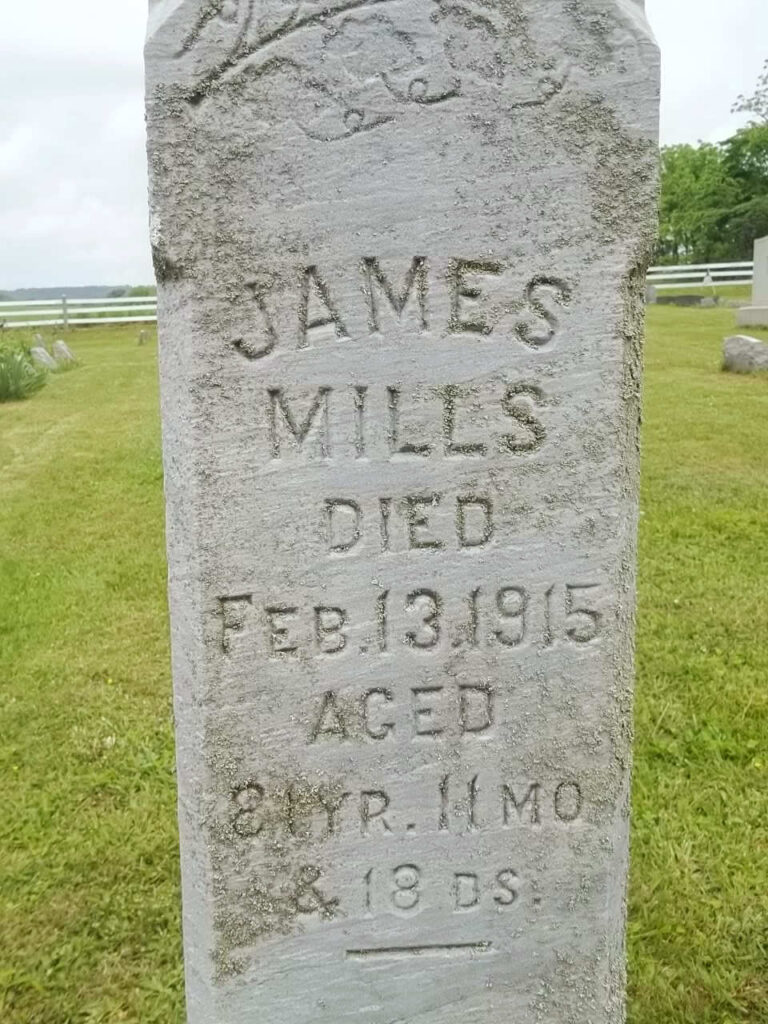
Gravestone of James Mills (b. 1833) at Saint James Episcopal Church Cemetery in Exchange, PA. Credit: Findagrave.com/Tammy Clark
Summertime, and the Living is… Easy?
Drafted: July 10, 2018
Recently on Facebook, there was a photo of some folks making hay: tractor, baler, hay wagon, and a person on the wagon loading and stacking. The caption reads something like, “Have you ever done this?” It did take me back to summers on the farm—the hard work, sweat, hot sun, cool drinks of water from a jug, picnics, and sitting on the porch as the sun went down. In other words, you take the bad with the good! Summers back in the day, without air conditioning and ice on the refrigerator door, were certainly different than today. But, many times it was a good different in that they were simpler, quieter, more laid back, and much less hectic.
The following photos are from the Hagenbuch Archives. They remind us of summer activities in the distant and more recent past.
Some of my favorite articles that Dad wrote included photographs pulled from the family archives. It’s unfortunate that he never finished this post. However, he did go onto write a few others that highlighted what it was like during the summer in Montour County, PA. One of these focused on family reunions and picnics. Another highlighted the types of work that needed done on a family farm in August.
More of Mariah Madden
Drafted: September 2, 2020
Of course, there is always more genealogical research on people to be done. We never seem to be finished looking for details of someone’s life. My next job was to find out where she was buried. I found Mariah’s death certificate listed in Ancestry.com. According to the death certificate, Mariah died on March 20, 1941. She was born July 29, 1862 and her occupation is listed as a practical nurse. Her parents, Patrick and Elizabeth (Tannin) Madden were born in Ireland. Mariah died of influenza and was living in Liberty Township, Montour County, PA at the time. Her burial spot is listed as Derry Cemetery, Montour County. All of this was reported by Elizabeth Lewis.
Too many details for a maiden lady who delivered babies? Not at all! There is more. Now I could search the gravesite and see the a photo of Mariah’s grave. On the stone her name is spelled “Maria” and the dates completely fit with the death certificate. Derry Presbyterian Cemetery is located near White Hall, Pennsylvania. The church that was once associated with the cemetery is now a Mennonite church. There are no other Maddens buried in the cemetery, so it is a mystery as to why Mariah was buried there upon her death in 1941. Most likely,
Dad never finished his final thought explaining why he believed Mariah Madden was buried in Derry Presbyterian Cemetery. This draft appears to have been created from information that went beyond the scope of another piece he was finishing about Mariah’s work as a midwife and her connection to our Hagenbuch family. It appears he either lost interest in the follow-up piece or decided there wasn’t enough detail to craft a full story.
Reading through my father’s unfinished articles, I see that many of them were eventually used in future pieces. For those that remain untold, my work on Hagenbuch.org continues. It is my hope that others, including Dad’s siblings and relatives, may be able to fill in some of the missing pieces and help finish the work he previously started.

